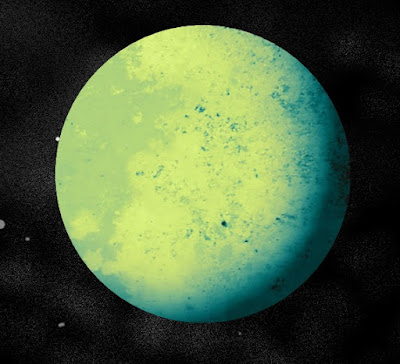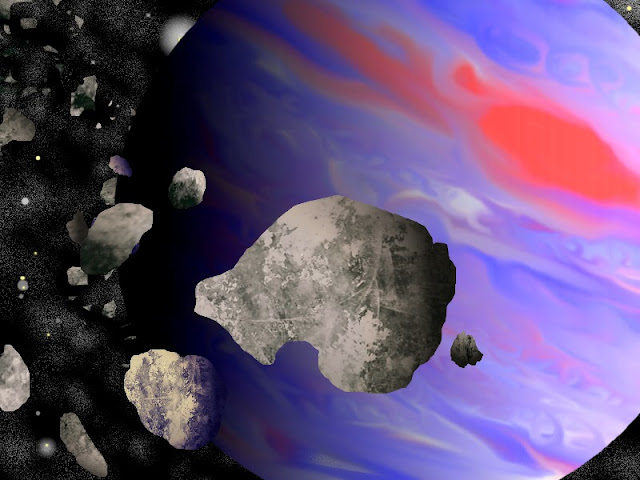The Economics of Star Trek
The Proto-Post Scarcity Economy
 |
| self-sealing stem bolt |
by Rick Webb
"I promise this is about Star Trek. Sort of. Bear with me a moment.
I’ve been reading a lot about robots lately. When I read about robots, and the future, I can’t help but think about it in economic terms. And that inevitably turns my mind to the branch of economics called post scarcity economics. Traditional economics, of course, deals with the efficient allocation of inherently scarce materials. Post scarcity economics deals with the economics of economies that are no longer constrained by scarcity of materials — food, energy, shelter, etc.
The thing that never sits quite right with post scarcity economics, though, at least the very little that I’ve read, is that it’s always sort of an all or nothing affair: you either don’t have enough of anything or you have enough of everything. Thinking of this as a mental exercise is kind of fun, I think, but in reality it seems to me that getting from point A — a scarcity economy — to point B — post scarcity — is going to be a long, complicated journey as somethings become more abundant in some places, while other things are still scarce.
What is needed is some sort of interim-, or proto-post scarcity economics.
More and more I find myself thinking we are, as a race, constrained by the economic models we have. We have capitalism, of course, the proverbial worst model except for every other one that dominates much of our planet right now. It’s definitely a scarcity-based system. Then we have the centrally planned systems of Communism and Marxism, not particularly effective, as it turns out. We have European-style socialist capitalism, but that’s still capitalism, and scarcity-based, albeit with a much more robust safety net than we have here in the US. Some Americans seem to think that a robust safety net somehow nullifies the distributed planning of capitalism. I’ll listen to them again when our schools are decent and our life span starts increasing again magically.
The key here, to me, is to start thinking about how economics would work when we decouple labor from reward. Does that make a system inherently communist? I don’t think it does. People work. They get paid. It is market driven, and not centrally planned. In reality,the market already basically dictates this, for who can claim that a Wall Street banker works more than a teacher? The only thing we really need to do is take this to a logical extreme:that people can still get paid doing zero work. This fear seems to be at the heart of most people who say that Europe is communist: if we give people so much welfare, some of them might stop working! Quelle Horreur!
It seems to me that with the rise of machines and robotics, advances in mining technology, energy technology (both fracking and green energy technologies), the obesity epidemic in the US, etc., that there are plenty of reasons to believe that we may be at the beginnings of a post scarcity economy. We have a surplus, no doubt. Of course, we still have legions of people in the world that are starving, and even people still here at home. But we actually have the capacity to feed them, to feed everyone, even now, even if we don’t have the will. It’s not a matter of scarcity; it’s a matter of the organization of labor and capital.
Take a mental journey for a moment with me: what if, one day, technology reaches the point that a small number of humans — say, 10 million — can produce all of the food, shelter and energy that the race needs. This doesn’t seem like insanely wishful thinking, given current trends. There’s no rational reason why the advances in robotics, factories, energy and agriculture couldn’t continue unabated for long periods of time. Of course I’m not saying they will, but rather, they could.
So, then, take that journey. What, then, of labor? In today’s terms, a ‘healthy’ economy now is one at or near full employment. A healthy economy now is one where everyone has a job. But in our mental exercise, those jobs are actually unrelated to a healthy economy, at least from strict economic terms. Everyone’s fed and housed and tons of people simply don’t need to work. Right now, we have them working making shit we don’t need. Is that any better than them not working?
I give you we’re in some fringe areas of economics here, but I have always wondered: is there any economic proof that we need full employment to reach full satisfaction of needs? To my knowledge, there isn’t. There’s a body of economics that goes into standards of living, and the increased standard of living. And here we get to our shitty world of unabated consumerism,Thorstein Veblen’s conspicuous consumption and George Battaille’s accursed share — the inevitable destiny of all economies to eventually produce more than they need, and, thus, waste it.
Seems to me that if we could think beyond capitalism and think of a new model, we could break out of this pointless cycle of more and more consumption of shit we don’t need and model things in another way..."
To read the entire article, click this link.
































